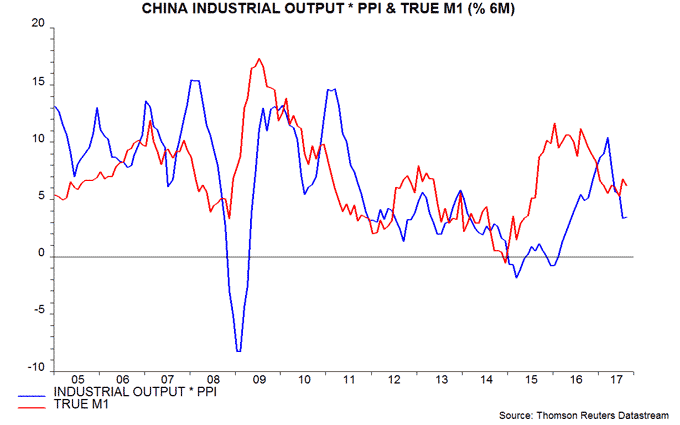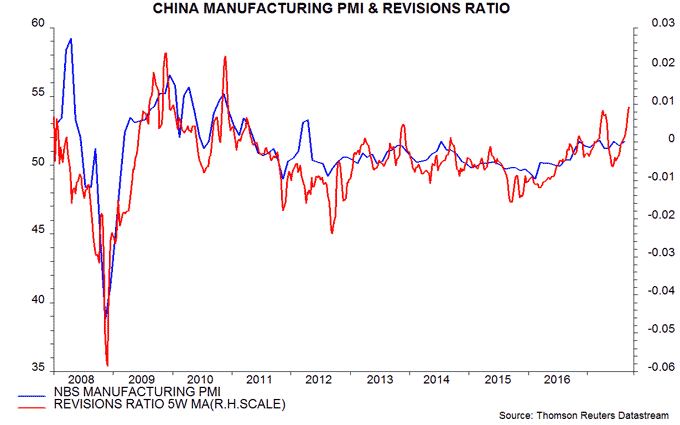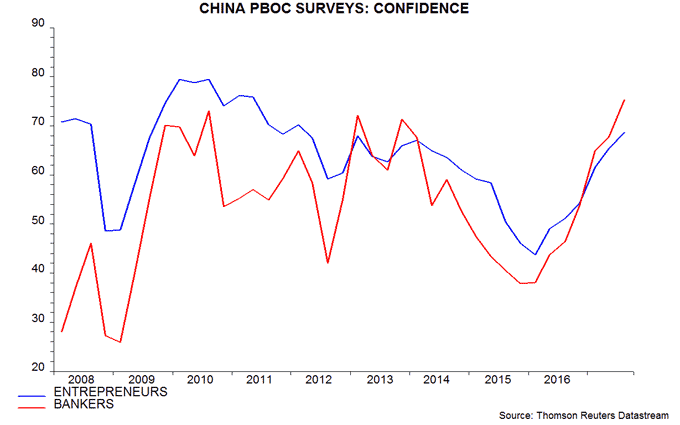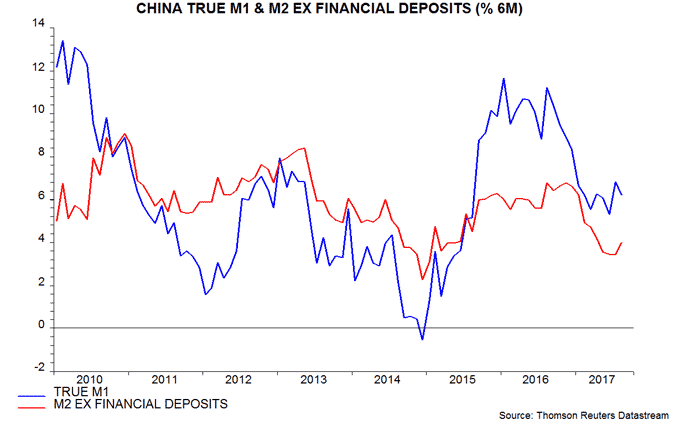Chinese narrow money trends reassuring
Chinese narrow money continues to expand at a respectable pace, suggesting broadly stable economic growth and inflation through early 2018.
Six-month growth of the “true M1” measure tracked here fell significantly in late 2016 / early 2017 but has stabilised in recent months at about 6%, or 12% at an annualised rate. This is around the middle of the range in recent years and well above levels reached in 2014 ahead of significant economic weakness – see first chart.

The earlier monetary slowdown has been reflected in a moderation in growth of nominal GDP and nominal industrial output, the latter proxied by multiplying the volume of output by producer prices – first chart. With narrow money growth stable since the spring, nominal output growth is unlikely to fall much further and may recover into early 2018.
Six-month growth of the volume of industrial output fell further in August but this may reflect supply-side influences – adverse weather and anti-pollution restrictions – rather than demand weakness. Consistent with this explanation, six-month producer price inflation ticked up, with a significant jump in prices in August alone – second chart.

The suggestion that nominal economic growth is holding up is supported by earnings trends, with the equity analysts’ revisions ratio moving back into positive territory recently – third chart. The PBoC’s third-quarter surveys of entrepreneurs and bankers, meanwhile, were upbeat, reporting further rises in confidence levels and profitability assessments – fourth chart.


Broad money is lagging narrow money: six-month growth of M2 excluding financial sector deposits, the preferred broad measure here, is near the bottom of its range in recent years, though ticked up in August – fifth chart. The higher level of narrow money growth, however, indicates that broad money weakness is not (yet) negatively affecting spending plans, probably because the improved economic climate has resulted in a decline in the demand to hold precautionary money balances.


Reader Comments